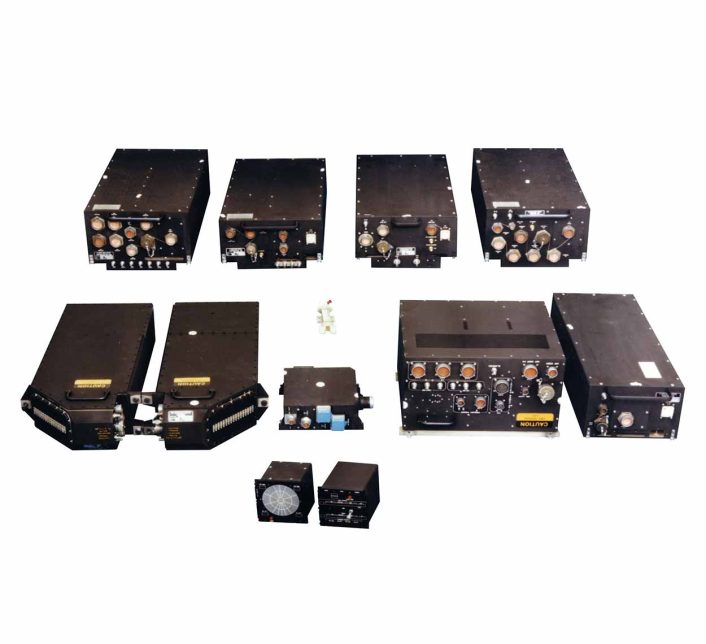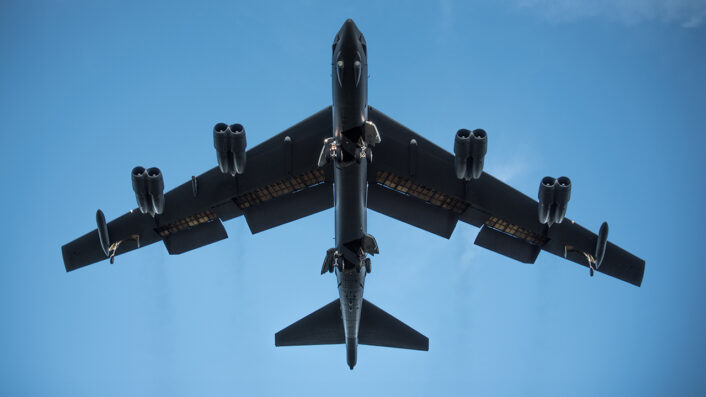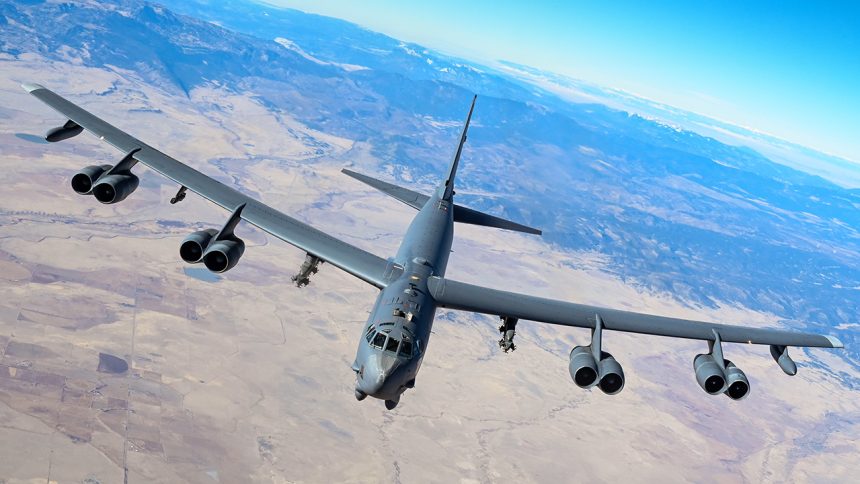Advanced EW Upgrades Keep B-52 Stratofortress Combat-Ready.
The upgraded B-52’s AN/ALQ-172 electronic warfare (EW) self-protection system was successfully tested recently, L3Harris has announced.
The ALQ-172 self-protection integrated RF subsystem is a combat-proven system that can counter multiple pulse, continuous wave, pulse Doppler, and monopulse threats simultaneously. Integrated with the aircraft’s controls, displays, and defensive subsystems, the ALQ-172 provides the aircrew with robust protection against sophisticated radar-directed threats.
According to the details made available by L3Harris, five of the nine Line Replaceable Units (LRUs) being upgraded in the AN/ALQ-172 were tested during a 5.3-hour test flight over Texas.
Line-replaceable units (LRUs), also known as line-replaceable items or components, are specific parts of an aircraft that can be quickly removed and replaced by technicians. Aircraft of all ages are intricate machines with millions of parts, including fasteners and other small components. However, some components, classified as LRUs, are designed for easy and swift replacement. These units encompass a variety of parts that can be exchanged to ensure the aircraft remains operational without extensive downtime.

During the flight, five LRUs were tested together for the first time and demonstrated stability, reliability, and notable performance in three critical areas:
- Acquisition: Efficiently finding and tracking targets or signals
- Electronic Countermeasure (ECM) Response Time: Rapid response with countermeasures such as jamming
- Geolocation: Accurately determining the precise location of threats or signals
The tests were conducted as part of the maintainability and reliability system (MARS) upgrade, under a 10-year, $947 million contract awarded to L3Harris in 2021. The upgrade aims to enhance the performance, maintainability, and reliability of the B-52’s EW systems.
As part of the MARS contract, L3Harris has redesigned seven of the nine LRUs in the EW system and is nearing completion of the final two. These upgrades will bolster the USAF’s Global Strike Mission and enhance the B-52’s effectiveness in modern warfare, making future upgrades more cost-effective and easier to implement.
“The electronic threat landscape grows more complex and contested every day, underscoring the importance of our continued EW enhancements to the B-52,” says Jimmy Mercado, L3Harris Program Director in a public statement. “The flight test showed that we’re providing the advanced capabilities needed to ensure the aircraft and its crews remain mission-ready and effective well into the 2050s.”
More upgrades to the BUFF
Over the years, the iconic B-52, fondly known as the BUFF (“Big Ugly Fat Fellow”), has seen numerous upgrades to improve safety, reliability, and performance. Now, it’s set for its most extensive modernization yet: in fact, by 2026-2027, the U.S. Air Force plans to roll out the first upgraded B-52J bombers, aiming for initial operational capability by 2030. Central to this upgrade are the new RR F130 engines, replacing the Pratt & Whitney TF33-PW-103s used since the 1960s. These engines promise extended lifespan, better fuel efficiency, longer range, reduced emissions, and lower maintenance costs.

A major enhancement includes a new radar system derived from the F/A-18E/F Super Hornet’s APG-79 AESA radar, improving range and situational awareness while allowing for electronic warfare capabilities. Additionally, the B-52 will feature noticeable humps near the wing roots, likely housing classified equipment for wideband satellite communication. The aircraft will also see an exterior look update, with Litening and Sniper targeting pods replacing the AN/ASQ-151 Electro-Optical Viewing System blisters.
Internally, the cockpit will be modernized with multifunction digital displays, a hybrid mechanical-to-digital throttle system, new data concentrator units, an updated engine fault maintenance recorder, and an upgraded engine air data system. The crew complement will be reduced from five to four members, maintaining some analog instruments.









